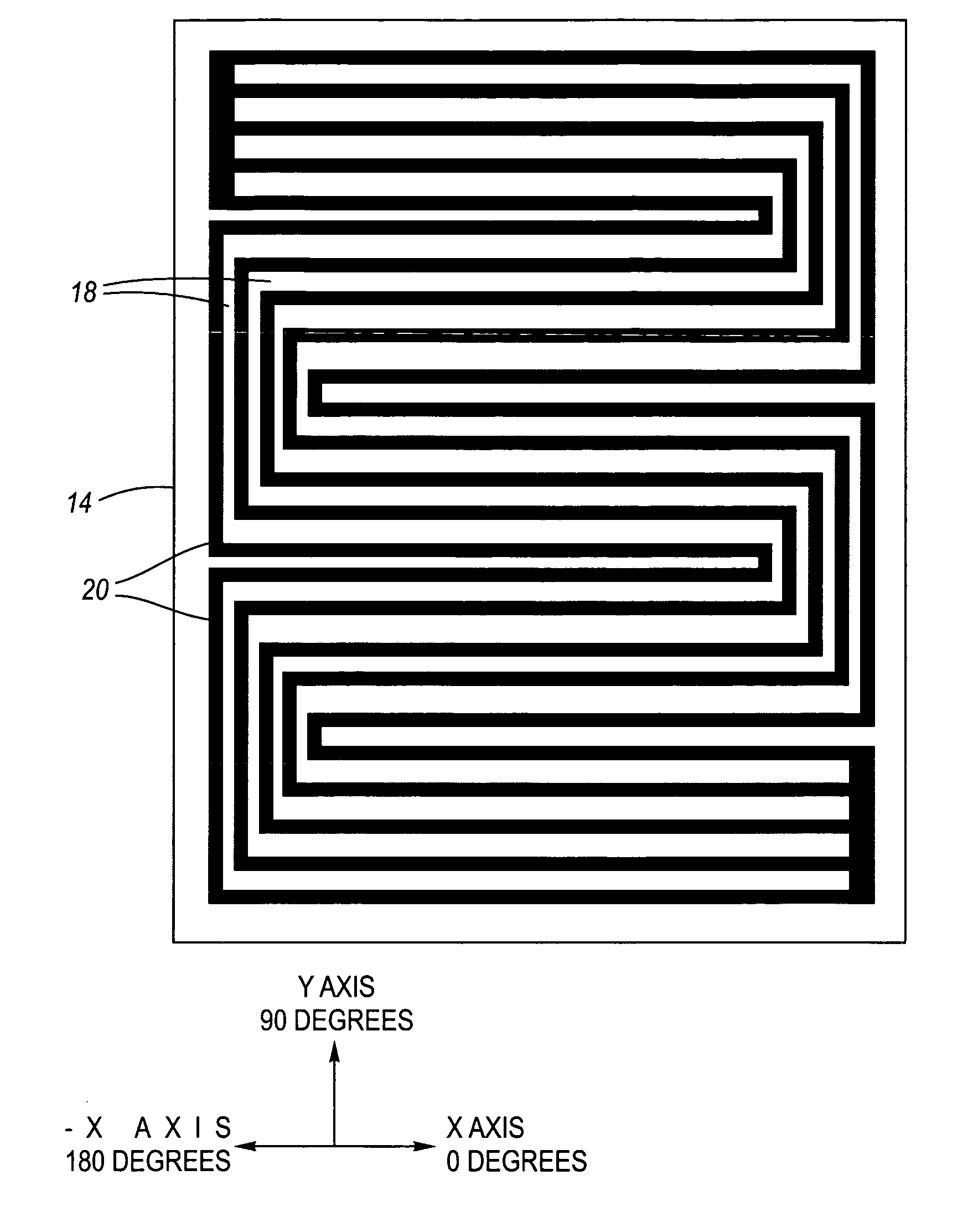Gas diffusion layer preconditioning for improved performance and operational stability of PEM fuel cells
a technology of gas diffusion layer and pem fuel cell, which is applied in the field of pem fuel cells, can solve the problems of significant loss of compression pressure in the fuel cell stack, degrade the performance of the fuel cell, and water pooling, so as to reduce the compression set of a gdl, reduce the loss of compression, and reduce the mal-distribution of reactant gases
- Summary
- Abstract
- Description
- Claims
- Application Information
AI Technical Summary
Benefits of technology
Problems solved by technology
Method used
Image
Examples
example i
[0039] A GDL material composed of a carbon fiber paper was selected, having an initial compressed thickness of about 230 micrometers. It was determined that this material used as a GDL layer in a PEM fuel cell (ie., in-situ) acquired a compression set after about 20 hours of stack operation, so that the compressed thickness under stack compression load became 165 micrometers. According to the method of the present invention, an identical GDL material was preconditioned by being compressed (ie., compression loaded) outside the fuel cell and before its assembly (ie., ex-situ), wherein the GDL material was subjected to 2.1 MPa for 2 hours and then completely compression unloaded. The GDL material thereby acquired a compression set so that the compressed thickness became 195 micrometers before being used in a fuel cell stack. The preconditioned GDL material was then used as a GDL layer in a PEM fuel cell, wherein it was determined that the compression set remained generally stable over ...
example ii
[0042] Preconditioning of the GDL for a fuel cell build by pre-compression similar to that referred in Example I was made in a batch process. A set of 100 sheets of GDL material was precut to predetermined size and stacked in a pile, wherein each GDL sheet was separated from the next one by a plastic shim of approximately 250 micrometers thick. This pile was then placed in a compression apparatus (see FIGS. 10A through 10C), and the same pressure of 2.1 MPa was applied so as to simultaneously compress all the sheets, but this time, for research purposes, the duration was 3 hours. The GDL sheets acquired a compression set over time, so the actual compression load also decreased over time. Therefore, every 10 to 20 minutes, as depicted at FIG. 12, the compression force was checked and adjusted, see F1 through F10, to the initial compression load value. After 2 hours under compression load, the residual compression force was about 99 percent of the initial value, wherein after 2 hours ...
PUM
| Property | Measurement | Unit |
|---|---|---|
| thickness | aaaaa | aaaaa |
| thickness | aaaaa | aaaaa |
| compressed thickness | aaaaa | aaaaa |
Abstract
Description
Claims
Application Information
 Login to View More
Login to View More - R&D
- Intellectual Property
- Life Sciences
- Materials
- Tech Scout
- Unparalleled Data Quality
- Higher Quality Content
- 60% Fewer Hallucinations
Browse by: Latest US Patents, China's latest patents, Technical Efficacy Thesaurus, Application Domain, Technology Topic, Popular Technical Reports.
© 2025 PatSnap. All rights reserved.Legal|Privacy policy|Modern Slavery Act Transparency Statement|Sitemap|About US| Contact US: help@patsnap.com



